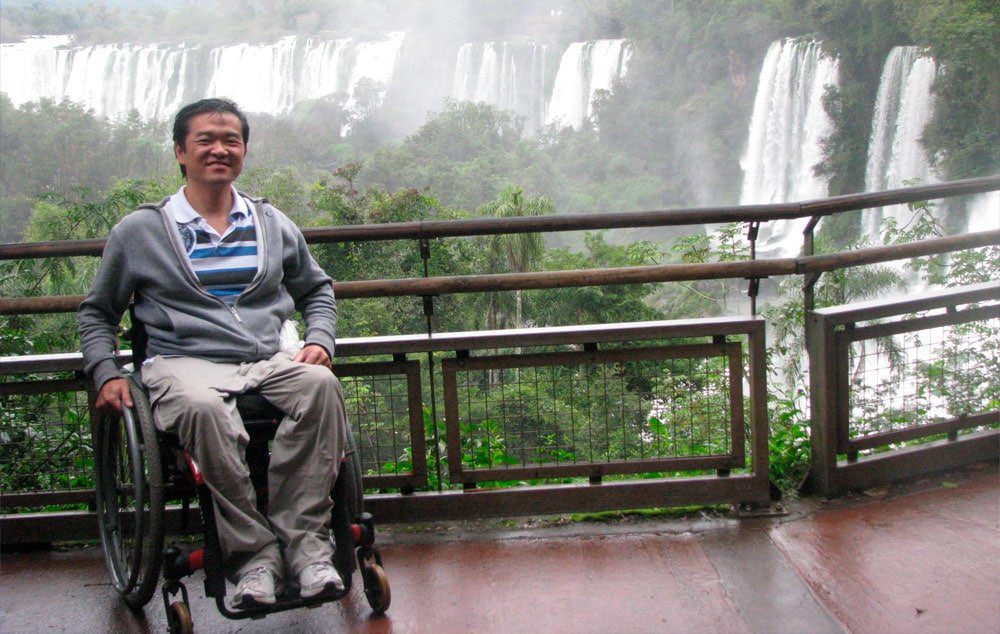Persons with disabilities make up a significant part of the world’s population. Their number is on the rise due to the ageing trend being observed in certain regions and the concomitant increased prevalence of illnesses. The World Health Organization estimated that in 2011 there were approximately one billion disabled people in the world, that is, 15% of the total population.
They also constitute an emerging segment in terms of tourism demand. There is wide consensus that this demand is: growing; multi-customer, since each disabled person tends to be accompanied; an image-booster for the destination; non-seasonal, especially with regard to beach tourism; and capable of generating higher income than the average for conventional tourism.
In order to contribute to improving the living conditions of disabled people, an agreement was signed between the World Tourism Organization (UNWTO) and the ACS Foundation in April 2012, with a view to promoting good practices arising from public-private cooperation for the benefit of tourism for all.
This report, which is an outcome of the agreement, focuses on the supply-side perspective. It takes into account the market needs generated by the demand for tourism for all and the sustainability of the production of goods and services created to provide accessibility. The ACS Foundation has sponsored surveys to ascertain the needs and opinions of the users of architectural-historical heritage.
The document gives an overview of tourism for all, and examines the Spanish and international regulatory framework (guidelines and recommendations of the
World Tourism Organization, the United Nations and European institutions). The report then explains the concept of public-private partnership and summarizes the main activities of the ACS Foundation and of the Real Patronato sobre Discapacidad (Spanish Royal Trust for the Disabled).
A key objective of good practices in terms of universal accessibility is to reinforce the competitiveness of tourism destinations. In this regard, the report lists accessibility programmes implemented in Spanish cities (Ávila and Malaga) as well as in a dozen urban communities in Germany, France and Switzerland. The document describes how places of the highest historical and architectural value have been made accessible without altering their cultural value or affecting their safety conditions. The cases presented (all in Spain) are as follows: the Monastery of San Lorenzo de El Escorial (1584), the Monastery of Santa María la Real de las Huelgas (1187); the Royal Monastery of Santa Clara
(1363) and the Monastery of Yuste (converted in 1556 into the residence of Carlos I).
The project at the Iguazú National Park (Misiones, Argentina) and the plans prepared to make accessible three river gorges in Cáceres (Spain) show that it is indeed possible to make such high-value destinations accessible to be visited by all if they are provided—as described in the document—with the appropriate
equipment, facilities and modes of transport, while at the same time giving suitable training to their personnel.
This Report, conceived in the context of tourism for all, features good practices for universal accessibility at hotels, by analysing the Universal Accessibility Plan
implemented by Spain’s Red de Paradores; in the Swiss railway system; at the airports operated by Grupo Aeroportuario del Pacífico (Mexico); and at sports
facilities. With respect to the latter, a summarized version is presented of the “Universal Accessibility to Sports Facilities Manual” of the Real Patronato sobre Discapacidad, which was prepared taking into account significant previous experiences, including the lessons learned at the 2012 London Paralympic Games.
Given the key role of the human factor in product development and in the provision of tourism services, the document shows the teaching methodologies and materials of the courses given to those involved in the design process (architects, engineers, etc.), those who carry out accessibility improvement work, and also to professionals working in tourism enterprises.
The ACS Foundation provides international exposure to the experience it has accumulated in universal accessibility by promoting international cooperation programmes. All such programmes have the support of the Spanish Agency for International Cooperation for Development (Agencia Española de Cooperación Internacional para el Desarrollo, AECID). Incentives are granted to professionals and the Reina Sofia prize is awarded to Ibero-American municipalities that have distinguished themselves through their universal accessibility activities. The document also refers to accessibility proposals included in the Spanish Cultural Centre project in Bogotá (Colombia), and the measures adopted (2010) at the Suchitoto Municipal Market (El Salvador). It also highlights that since 2007, the ACS Foundation, AECID and the Real Patronato sobre Discapacidad) have been holding the Ibero-American Seminar on Universal Accessibility, as a forum for Ibero-American experts. Its objectives and programmes are briefly summarized. The Seminar’s edition held in Cartagena de Indias (Colombia, April 2011) gave rise to the Universal Accessibility Network (Red AUN) as a platform for the exchange of experiences and knowledge among Ibero-American experts and professionals involved in the promotion of universal accessibility, with their objectives and activities being disseminated to this network.
Lastly, the “PATRAC: Accessible Heritage” project is presented. This is a success story in the area of research, development and innovation carried out as a result of public-private cooperation among universities, foundations and companies to create and place on the market the material resources required by disabled people to overcome physical barriers in their daily lives.
The document is completed with detailed information in its appendices. They contain the legal requirements in force in Spain on tourism for all; the main measures carried out in the city of Ávila (Spain); the code of conduct applied to the personnel at the Iguazú National Park (Argentina); and the guidelines for tourism activities specified in the “Accessible Tourism Course”. A summary is provided of the “Manual for an Accessible Environment” of the Real Patronato sobre Discapacidad prepared in collaboration with the ACS Foundation. In the last three appendices of the Report, the conclusions reached by last two sessions of the Ibero-American Seminar on Universal Accessibility (2012 in La Antigua, Guatemala, and 2013 in Lima, Peru) can be consulted, together with the Ibero-American Manifesto on Universal Accessibility prepared by Red AUN.
Source: UNWTO



